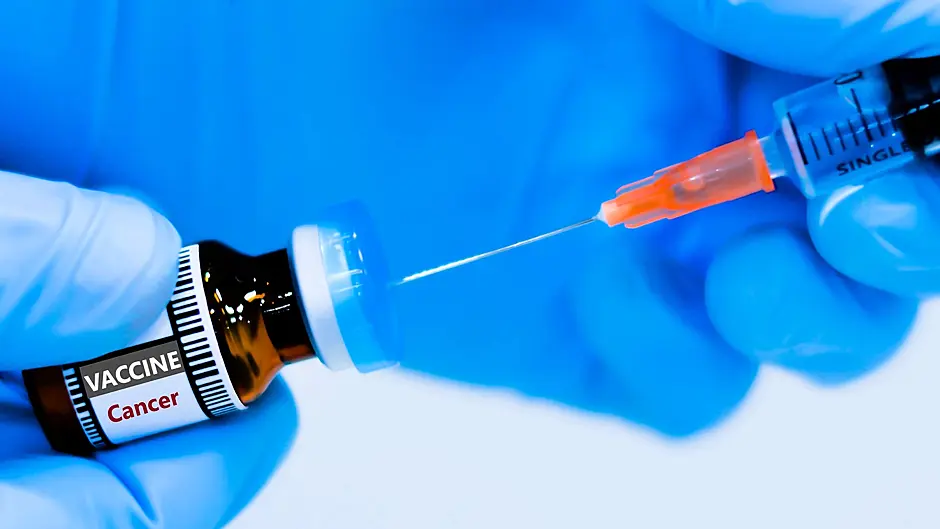
Vaccines do not cause cancer, but rather they can prevent strains of it, and one day it is hoped, possibly even treat it.
IN Greek mythology, Pandora was given a jar by Zeus and told never to open it, but curiosity got the better of her.
One night, she gave in to temptation and opened the lid.
A swarm of evils and misfortunes burst forth into the world – disease, pain, suffering, death, and fear.
Fear spreads the fastest. It’s immediate. It moves through words, headlines, and now social media at incredible speed.
This is why false rumours about vaccines have gained so much traction. Fuelled by fear, they travel faster than facts can catch up.
In a previous article, we looked at how a doctor in the UK manipulated data to create a false link between vaccines and autism.
Fear spread quickly and powerfully. By 2008, measles – a disease that can cause brain damage – was declared endemic in England again.
The damage took years to repair, and even now, many people still believe vaccines are harmful.
Vaccines do not cause cancer. In fact, vaccines can prevent cancer.
Like everything, vaccines can have side effects, but unlike medicines that treat illness, vaccines train our bodies to fight infections before they happen.
Think of vaccines as practice drills – helping your immune system prepare so it can perform when it matters most.
Michael Jordan is probably the world’s most famous basketball player.
Over a 20-year career, he won six NBA championships and scored 32,292 points. Reflecting on his success, he once said, ‘I’ve missed more than 9,000 shots in my career.
I’ve lost almost 300 games. Twenty-six times I’ve been trusted to take the game-winning shot and missed.
I’ve failed over and over and over again in my life. And that is why I succeed.’ Practice made Jordan one of the world’s greatest ever basketball players.
Vaccines help us to practice, but what is it that we are training for?
Micro-organisms such as viruses have stalked humans since the start of time. Some have helped us evolve, but many are locked in a constant war with us.
Viruses can’t grow or reproduce on their own – they hijack our cells, inject their genetic code, and burst out again, killing the cell in the process.
It’s something akin to Ridley Scott’s Alien movies – killing the cell and spreading to others.
Of course, humans have found ways to fight back – and even use microbes to their advantage.
In the 14th century, in a much debated event, the Mongols reportedly catapulted plague-infected bodies over the walls of the Crimean city of Caffa (now in the Ukraine).
Later during the American Wars, British forces deliberately gave smallpox-contaminated blankets to Native Americans resisting their rule.
Fearing the British might do it again, George Washington ordered his army to be inoculated by exposing them to a milder version of smallpox – a primitive form of vaccination, long before the first official vaccine was ever developed.
Today we know that viruses cause between 15–20% of cancers – including cervical, liver, lymph node, and mouth cancers.
In 2002, nearly half a million women developed cervical cancer, with half of them dying – mostly in developing countries.
A major cause was HPV, or human papillomavirus, which is a common virus that spreads through physical contact, including sexual contact.
Then, in the 1990s, two Australian scientists, Ian Frazer and Jian Zhou, made a breakthrough.
Their work led to the first cervical cancer vaccine, launched in 2006.
The HPV vaccine now prevents up to 90% of cervical cancers.
It works by training our bodies to destroy the cancer-causing HPV virus if we ever encounter it.
Originally aimed at girls, the vaccine programme now includes boys too – both to protect them and their future partners.
In the academic year 2022/2023, vaccine uptake amongst first year school students in Ireland was just 78.4%. While awareness campaigns have helped, challenges remain.
Ongoing research is even exploring how vaccines might be used not just to prevent cancer – but to treat it.
Like anything we come into contact with, vaccines can have side effects – though not nearly as widespread or severe as rumours might suggest.
The real question is whether the benefits outweigh the risks – something each of us must consider carefully.
I work mostly at CUH. Anyone familiar with it will know the road between the hospital and the shopping centre is very busy.
If I put on a blindfold and run straight across, I’ll probably end up in the emergency department – or worse.
I can reduce the risk by looking both ways and waiting for the green light.
Something unpredictable could still happen, but it’s far less likely.
Making decisions about vaccines – or any medical care – is about weighing risks and benefits. As we’ve said before, it’s about getting the right facts and deciding for yourself.
In the same way that symbols can shape national identity, the stories we tell about health influence how we face our fears.
The English first used the lion on their royal coat of arms in the 1100s. In the 1500s, the Scots wanted a beast that could defeat the lion.
In mythology, only one creature could – so they chose the unicorn. To this day, the British coat of arms has the lion for England on one side of the crown, and the unicorn for Scotland on the other.
When Pandora opened her jar, all that remained at the bottom was hope. Just as the unicorn was said to vanquish the lion, hope is our defence against fear.
In the fight against cervical cancer, that hope is real. In parts of Australia, where vaccination rates are high, the disease is already on the brink of extinction.
Vaccines give us hope – by training our bodies to prevent some types of cancer, and perhaps one day, to treat many more.
Know the facts – own your risk – decide for yourself.








